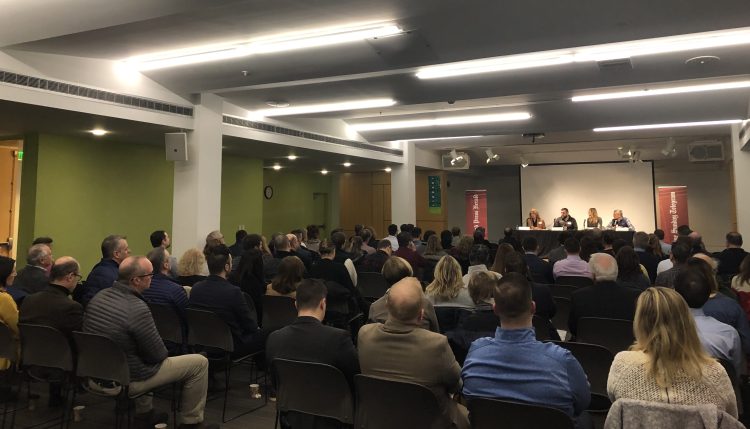Retail is one of the foundations of Maine’s economy. Three of the top five employers in the state are retailers, and sales tax accounts for 40 percent of the state undedicated revenue stream (second only to income taxes from individuals).
Yet how people buy things is changing, and retailers that want to remain viable are innovating to keep existing customers and attract new ones.
Three retail experts shared their insights on how their companies are dealing with challenges and strategizing for new customers:
• Matthew Bray, a Brunswick native, is head of Community Happiness for Grove Collaborative, a San Francisco-based, certified B-Corp that is an e-commerce platform for consumer package goods, which sells exclusively natural products. The company employs 50 people in Greater Portland, but expects to expand to 75 by April.
• Greg Elder is vice president of Retail, Outdoor Discovery Program and L.L. Bean for Business for L.L. Bean. He oversees L.L.Bean’s 43 retail and 10 outlet stores spread across 18 states with a focus on store operations, visual presentation and customer experience.
• Julie Libby is vice president of Fresh, Hannaford Supermarkets. In addition to overseeing departments that include fresh produce, meat/seafood, deli and bakery, she is involved in procurement and replenishment of product, development of merchandising strategies and sales development. Her scope of responsibility is across Hannaford’s 181 stores and numerous competitive marketing areas.
Among the panelists’ takeaways:
The goal is to deliver a high-quality product to a customer with ease
In that vein, all three companies are experimenting with new ways to enhance customer experiences. For instance, L.L., Bean is testing new, smaller concept stores in three different markets. In Park City, Utah, the gateway to the national parks in the West, the 8,000-square-foot store is geared toward tourists headed for outdoor adventures; in its test store in New Haven, Connecticut, home of Yale University, the store’s inventory and programs are geared toward college students; and in the Seaport section of Boston, it is customized for the urban buyer. The idea is to customize shopping in a way that engages customers — wherever you find them — with the outdoors.
At Hannaford, its Forest Avenue store is a learning laboratory. Shoppers there can pick up certain items off a shelf and read a monitor displaying qualities about those products. Video displays on refrigerated cases offer details on products inside. More broadly, a customer can place an order online through the store’s Hannaford To Go program and then pick it up at one of 56 locations.
Reach out to customers in whatever way they prefer
At Grove Collaborative, staff work social media channels, tapping influencers on platforms like Facebook to spread the word about their sustainable products.
“The biggest challenge for us is to get that second purchase,” said Bray.
Elder said as a more than 100-year-old company, L.L. Bean is committed to engaging customers however they prefer — in-store, online, on the phone and even ordering from its historic catalog, which it plans to continue. He said in April of 2020, the company expects to roll out new point-of-sale technology that will allow a customer to shop in whatever way they prefer with equal ease. That will give customers “lots of options,” he said.
Be authentic
As a B-Corp company, Grove Collaborative has to prove that it adheres to the highest sustainability standards. That means in addition to selling only natural and sustainably-sourced products, it does things like buy carbon offsets to compensate for the fossil fuels it consumes delivering packages to customers.
It tries to bring that awareness to all its customers.
“Conscientious choices are not just for the few,” Bray said, echoing Grove’s corporate mantra.
Keep the customer at the center of every decision
Libby said Hannaford will continue to invest in gathering customer feedback, since that information informs product selection, store locations, services etc. The company already uses customer surveys, digital data, rewards programs, but also accompanies shoppers as they browse the aisles to capture reactions and responses.
As the company deals with the physical constraints of bricks and mortar, there will likely be smaller stores, she said, heightening the importance of understanding what a customer wants.
The cost of acquiring new customers continues to go up
An example: both Hannaford and L.L. Bean have installed electric vehicle charging stations as a way to attract new customers and accommodate existing ones with electric vehicles.
Send questions/comments to the editors.



Comments are no longer available on this story